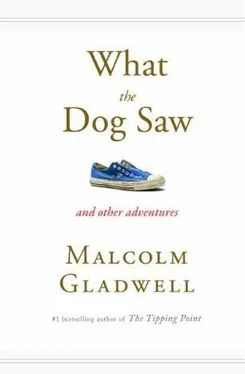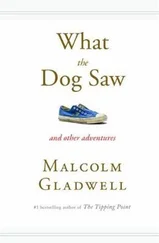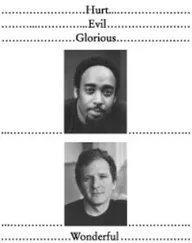A Georgia-based group called the American Temperament Test Society has put twenty-five thousand dogs through a ten-part standardized drill designed to assess a dog’s stability, shyness, aggressiveness, and friendliness in the company of people. A handler takes a dog on a six-foot lead and judges its reaction to stimuli such as gunshots, an umbrella opening, and a weirdly dressed stranger approaching in a threatening way. Eighty-four percent of the pit bulls that have been given the test have passed, which ranks pit bulls ahead of beagles, Airedales, bearded collies, and all but one variety of dachshund. “We have tested somewhere around a thousand pit bull-type dogs,” Carl Herkstroeter, the president of the ATTS , says. “I’ve tested half of them. And of the number I’ve tested I have disqualified one pit bull because of aggressive tendencies. They have done extremely well. They have a good temperament. They are very good with children.” It can even be argued that the same traits that make the pit bull so aggressive toward other dogs are what make it so nice to humans. “There are a lot of pit bulls these days who are licensed therapy dogs,” the writer Vicki Hearne points out. “Their stability and resoluteness make them excellent for work with people who might not like a more bouncy, flibbertigibbet sort of dog. When pit bulls set out to provide comfort, they are as resolute as they are when they fight, but what they are resolute about is being gentle. And, because they are fearless, they can be gentle with anybody.”
Then which are the pit bulls that get into trouble? “The ones that the legislation is geared toward have aggressive tendencies that are either bred in by the breeder, trained in by the trainer, or reinforced in by the owner,” Herkstroeter says. A mean pit bull is a dog that has been turned mean, by selective breeding, by being cross-bred with a bigger, human-aggressive breed like German shepherds or Rottweilers, or by being conditioned in such a way that it begins to express hostility to human beings. A pit bull is dangerous to people, then, not to the extent that it expresses its essential pit bull-ness but to the extent that it deviates from it. A pit-bull ban is a generalization about a generalization about a trait that is not, in fact, general. That’s a category problem.
One of the puzzling things about New York City is that, after the enormous and well-publicized reductions in crime in the mid-1990s, the crime rate has continued to fall. From 2004 to 2006, for instance, murder in New York declined by almost 10 percent, rape by 12 percent, and burglary by more than 18 percent. To pick another random year, in 2005 auto theft went down 11.8 percent. On a list of two hundred and forty cities in the United States with a population of a hundred thousand or more, New York City ranks two hundred-and-twenty-second in crime, down near the bottom with Fontana, California, and Port St. Lucie, Florida. In the 1990s, the crime decrease was attributed to big obvious changes in city life and government—the decline of the drug trade, the gentrification of Brooklyn, the successful implementation of broken windows policing. But all those big changes happened a decade ago. Why is crime still falling?
The explanation may have to do with a shift in police tactics. The NYPD has a computerized map showing, in real time, precisely where serious crimes are being reported, and at any moment the map typically shows a few dozen constantly shifting high-crime hot spots, some as small as two or three blocks square. What the NYPD has done, under Commissioner Kelly, is to use the map to establish impact zones, and to direct newly graduated officers—who used to be distributed proportionally to precincts across the city—to these zones, in some cases doubling the number of officers in the immediate neighborhood. “We took two-thirds of our graduating class and linked them with experienced officers, and focused on those areas,” Kelly said. “Well, what has happened is that over time we have averaged about a thirty-five-percent crime reduction in impact zones.”
For years, experts have maintained that the incidence of violent crime is inelastic relative to police presence—that people commit serious crimes because of poverty and psychopathology and cultural dysfunction, along with spontaneous motives and opportunities. The presence of a few extra officers down the block, it was thought, wouldn’t make much difference. But the NYPD experience suggests otherwise. More police means that some crimes are prevented, others are more easily solved, and still others are displaced—pushed out of the troubled neighborhood—which Kelly says is a good thing, because it disrupts the patterns and practices and social networks that serve as the basis for lawbreaking. In other words, the relation between New York City (a category) and criminality (a trait) is unstable, and this kind of instability is another way in which our generalizations can be derailed.
Why, for instance, is it a useful rule of thumb that Kenyans are good distance runners? It’s not just that it’s statistically supportable today. It’s that it has been true for almost half a century, and that in Kenya the tradition of distance running is sufficiently rooted that something cataclysmic would have to happen to dislodge it. By contrast, the generalization that New York City is a crime-ridden place was once true and now, manifestly, isn’t. People who moved to sunny retirement communities like Port St. Lucie because they thought they were much safer there than in New York are suddenly in the position of having made the wrong bet.
The instability issue is a problem for profiling in law enforcement as well. The law professor David Cole once tallied up some of the traits that Drug Enforcement Administration agents have used over the years in making generalizations about suspected smugglers. Here is a sample:
Arrived late at night; arrived early in the morning; arrived in afternoon; one of the first to deplane; one of the last to deplane; deplaned in the middle; purchased ticket at the airport; made reservation on short notice; bought coach ticket; bought first-class ticket; used one way ticket; used round-trip ticket; paid for ticket with cash; paid for ticket with small denomination currency; paid for ticket with large denomination currency; made local telephone calls after deplaning; made long-distance telephone call after deplaning; pretended to make telephone call; traveled from New York to Los Angeles; traveled to Houston; carried no luggage; carried brand-new luggage; carried a small bag; carried a medium-sized bag; carried two bulky garment bags; carried two heavy suitcases; carried four pieces of luggage; overly protective of luggage; disassociated self from luggage; traveled alone; traveled with a companion; acted too nervous; acted too calm; made eye contact with officer; avoided making eye contact with officer; wore expensive clothing and jewelry; dressed casually; went to restroom after deplaning; walked rapidly through airport; walked slowly through airport; walked aimlessly through airport; left airport by taxi; left airport by limousine; left airport by private car; left airport by hotel courtesy van.
Some of these reasons for suspicion are plainly absurd, suggesting that there’s no particular rationale to the generalizations used by DEA agents in stopping suspected drug smugglers. A way of making sense of the list, though, is to think of it as a catalog of unstable traits. Smugglers may once have tended to buy one-way tickets in cash and carry two bulky suitcases. But they don’t have to. They can easily switch to round-trip tickets bought with a credit card, or a single carry-on bag, without losing their capacity to smuggle. There’s a second kind of instability here as well. Maybe the reason some of them switched from one-way tickets and two bulky suitcases was that law enforcement got wise to those habits, so the smugglers did the equivalent of what the jihadis seemed to have done in London when they switched to East Africans because the scrutiny of young Arab and Pakistani men grew too intense. It doesn’t work to generalize about a relationship between a category and a trait when that relationship isn’t stable—or when the act of generalizing may itself change the basis of the generalization.
Читать дальше











